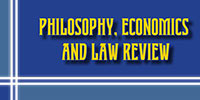Hamoun DOROUDI
M.Sc. (Economic Science), (Kathmandu University, University of the South Pacific), Great Britain
ORCID iD: orcid.org/0000-0001-8439-2387
hamun2roodi.hd@gmail.com
Fateme Helma Ghasemi GOUDARZI
Ph.D. Student (Economic Science), (Kathmandu University, University of the South Pacific), Great Britain
ORCID iD: orcid.org/0000-0003-4052-6413
f.ghasemigudarzi@yahoo.com
Bijay Kumar KANDEL
Ph.D. (Management) (Kathmandu University, University of the South Pacific), Great Britain; (Swiss Institute of Management and Innovation), Switzerland; (University of the South Pacific), Fiji; (UNICAF University), Cyprus
ORCID iD: orcid.org/0000-0003-3793-2410
bijaykkandel@gmail.com
UDC 330.3:330.5
DOI 10.31733/2786-491X-2022-2-85-95
Keywords: economic growth competitiveness index, institutional variables, structural variables.
Abstract. Reaching long-term sustainable economic growth is very important for every country. Almost all macro-economic policies in a country founded based on rational criteria and indicators of competitiveness of the economic, social, and cultural country can be a vital element of sustainable economic growth. This paper tries to investigate the impact of the competitiveness index on economic growth with the emphasis on institutional variables and structural changes and for this purpose, it used the combined data of 10 oil-exporting countries, during the period (2000-2017) through the generalized method (GMM). Independent variables include: Capital stock per capita, labor, structural change index, competitiveness index, international indicator risk of the countries, and the dependent variable for per capita growth economy is GDP.
The estimation results show that the increase in the competitiveness index leads to increasing economic growth as well as effects of structural index on economic growth is positive and significant, and increasing the international risk countries (Institutional Index) has a negative effect on economic growth which is based on theoretical principles.
References
Acs, Z., Estrin, S., Mickiewicz, T., & Szerb, L. (2018). Entrepreneurship, Institutional Economics, and Economic Growth: an Ecosystem Perspective. Small Business Economics, 51(2), pp. 501-514.
Afonso, A. & Furceri, D.. (2010). Government size, composition, volatility and economic growth. European Journal of Political Economy, vol 26, pp.517-533.
Arellano, M., & Bover, O. (1995). Another look at the instrumental variable estimation of error-components models. Journal of. Econometrics, 68, pp. 29-51.
Arellano, M. & Bond, S. (1991). Some tests of specification for panel data: Monte Carlo evidence and an application to employment equations. Review of Economic Studies, 58, pp. 277–297.
Arron, J. (2000). Growth and Institutions: A Review of the Evidence. The World Bank Research Observer, 15(1), pp. 99-135.
Baltagi, H. (2008). Econometric analysis of panel data. Chichester: John Wiley & Sons Ltd.
Blundell, R. & Bond, S. (1998). Initial conditions and moment restrictions in dynamic panel data models. Journal of Econometrics, Elsevier, vol. 87(1), pp.115-143.
Chenery, H.B. (1979). Structural change and development policy. Oxford University Press, Oxford.
Doran, J., McCarthy, N., & O’Connor, M. (2018). The Role of Entrepreneurship in Stimulating Economic Growth in Developed and Developing Countries. Cogent Economics & Finance, 6(1), pp. 144-209.
Easterly, W. & Levine, R. (2003). Tropics, germs, and crops: how endowments influence economic development, Journal of Monetary Economics, Elsevier, 50(1).
Ulengin, F., Ulengin, B. & Onsel, S. (2002). A power-based measurement approach to specify macroeconomic competitiveness of countries. Socio-Economic planning sciences, 39, pp. 203-226.
Hirschman, A. (1958). The Strategy of Economic Development. New Haven: Yale University Press.
Institutions and Growth – a Literature Survey. Center or Economic and. Business Research (CEBR).
Dawson, J. (2006). Regulation, Investment and Growth across Countries. Cato Journal, 26(3).
Kordalska, A., & Olczyk, M. (2016). Global Competitiveness and Economic Growth: A One-Way or Two-Way Relationship? Equilibrium. Quarterly Journal of Economics and Economic Policy, 11(1), 121-142.
Kuznets, S. (1954). On Comparative Study of Economic Structure and Growth of Nation. National Bureau of Economic Research, New York.
Lucas, R. (1988). On the Mechanics of Economic Development. Journal of Monetary Economics, 22, pp. 3-42.
Malik, A. (2002). State of the art in governance indicators. Background paper for HDR 2002, Occasional. Paper 2002/7, Human Development Report Office.
Mary M. Shirley (2008). In Institutions and development. Edward Elgar Publishing.
North D. (1990). Institutions, Institutional Change, and Economic performance. Cambridge University Press.
Robert, J. Barro & Jong-Wha Lee, (2013). A new data set of educational attainment in the world, 1950–2010. Journal of Development Economics, Elsevier, 104(C), pp. 184-198.
Rodrik, D. (2005). Growth Strategies. Handbook of Economic Growth.
Solow, R. (1956). A contribution to the theory of economic growth. Quarterly, 70, pp. 65-94.
World Economic Forum. The global competitiveness report. URL : www.wordbank.org.
